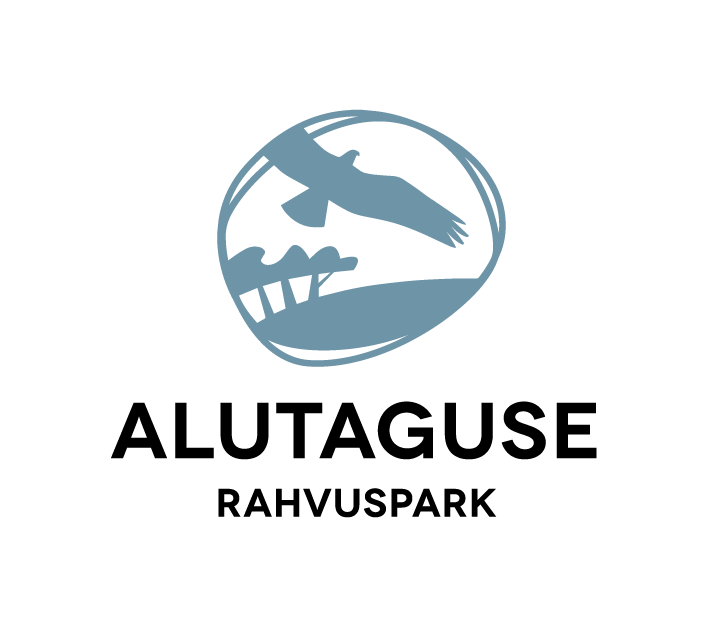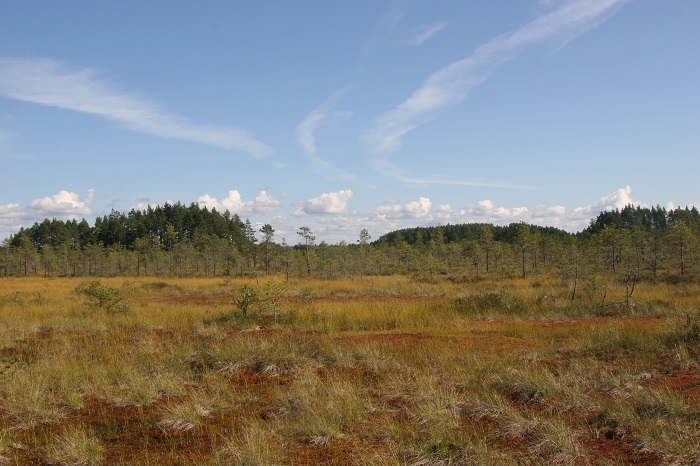
Agusalu bog system
The Alutaguse National Park, Agusalu Protected Area (11,003 ha) has been established to protect the intact bog landscape, diversified communities and rare species. The Agusalu Protected Area is a part of the Natura 2000 network, and one of the Ramsar wetlands of international importance.

Photo by Anne-Ly Feršel
The Agusalu protected area with its three detached plots lies amidst the Alutaguse Lowland and is a part of Estonia’s largest wetlands – the Puhatu Wetlands. Alteration of east-westerly high and narrow, forest-covered sand ridges with small patches of bog is characteristic of the area. Estonia’s only continental dunes cover almost a fifth of the wetlands’ area. There are approximately 200 dunes, most of which are 7 – 18 m high, 200–3,000 m long, and 20–200 m wide. Old natural forests, rare in Estonia and all over Europe, grow on the dunes. In the landscape you can notice short and sharp transitions from wet to dry and from one habitat type to another. All the stages of bog development are also well observable. Although the mire is one of Estonia’s richest habitats of cranberries, it is hardly accessible and therefore little affected by human activities.
Lake Imatu (28 ha) is a unique naturally eutrophic body of water.
The area offers favourable breeding and stop-over sites for plenty of protected species of birds, including the white-tailed eagle (Haliaeėtus albicilla), golden eagle (Aquila chrysaetos), capercaillie (Tetrao urogallus), and willow grouse (Lagopus lagopus).
The ridges surrounded with large fens and bogs provided the local people with shelter at the wartime.
The protected area has a cycling trail and recreation sites.
Ida-Virumaa’s largest protected areas have been formed to protect the Alutaguse Wetlands, all of which being the parts of the Natura 2000 network. The naturally preserved mires are rare throughout Europe. Wetlands contain considerable stocks of clean water and it is important for both people and the species living there to protect them. Only 16% of the former territory of our wetlands has been placed under protection. Due to drainage, most bogs are not able to produce more peat. Nearly all Estonia’s greatest wildfires have takem place in drained bogs. The importance of wetlands is more and more acknowledged and possibilities for their restoration are actively being sought for. In addition to the drainage for the forest plantations and peat production, the county’s fens and bogs are also endangered by the oil shale mines and alkaline air pollution.
- Right of way: you can pass through and stay on private land from sunrise to sunset without causing disturbance to the owner or damage to the property.
- If the private property is fenced or posted against trespassing, the landlord’s permission is necessary.
- It is permitted to drive your motor vehicle on public roads and pathways. Parking is allowed within designated parking areas.
- Camping and making fires is allowed only in prepared and designated locations.
- Do not use growing trees or bushes for fire.
- Making fires during a high fire-risk periods is striclty prohibited, even in special camp-fire locations.
- Please make sure no detergents enter natural water bodies
- Please use appropriate toilet facilities
- Please keep your pets under control and on leads at all times, they are a threat to wild life.
- Picking up wild berries, mushrooms and flowers etc is allowed, unless it is a protected species.
- Do not desecrate the natural beauty of the area
- Please report any damage or theft you may witness to the natural habitat to this area to 1313 (Environmental Information)
More informations: loodusega koos and visit estonia